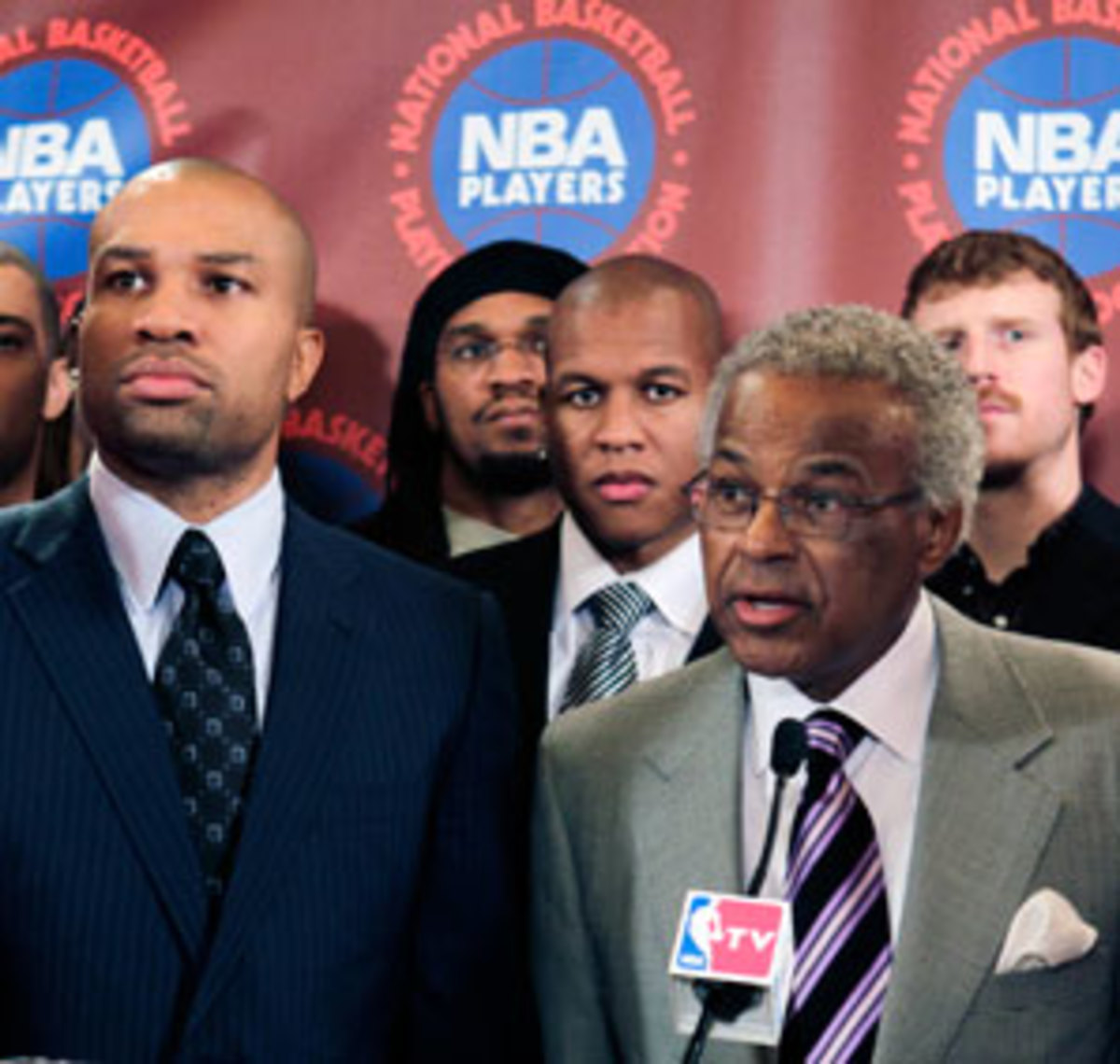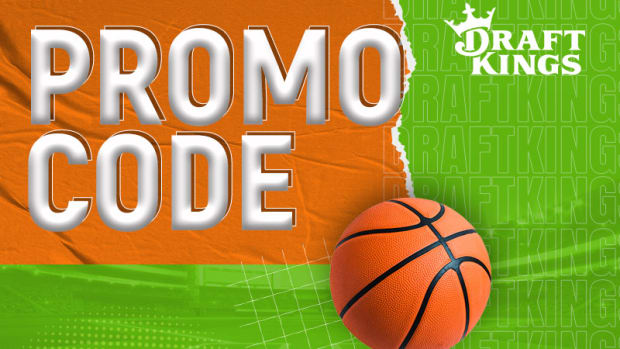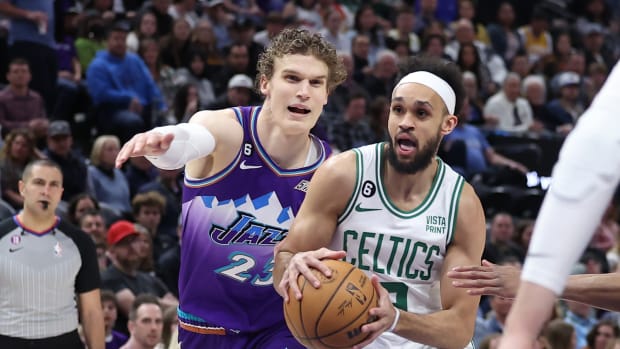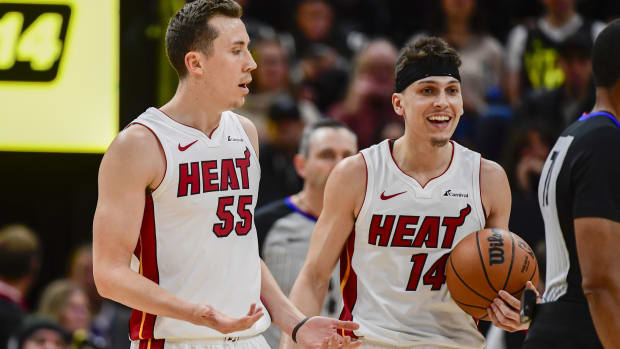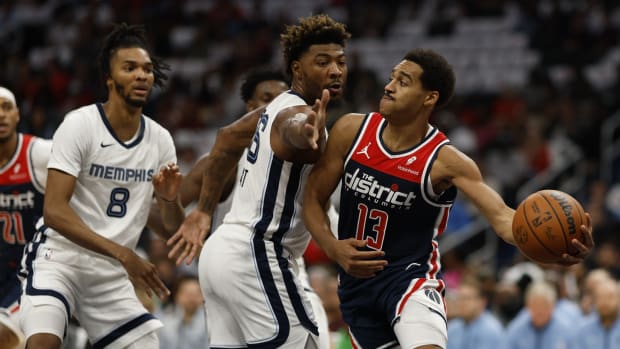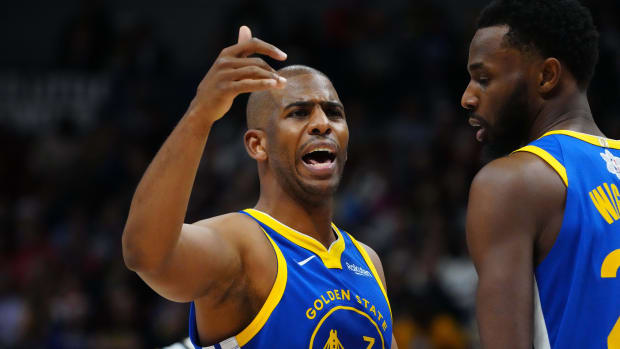NBA players, owners may still run into problems with tentative deal
The NBA and representatives for its players agreed to the framework of a collective bargaining agreement that, if ratified, will salvage a 66-game season and guarantee labor peace for at least six years. The two sides have come to agreement on the major issues that gave rise to the lockout. Most notably, they have agreed to divide the league's basketball-related income evenly, with each side subject to gaining or losing up to one percent depending on the league's economic success. They have also agreed on a harder salary cap, among a bevy of other rules that will slow the growth of NBA players' salaries and ensure that owners' labor costs are reduced. If all goes as planned, the free agency period will begin on Dec. 9, the regular season will begin on Christmas Day and the players' and owners' agreement will last 10 years, with each side able to opt-out after six.
All may not go as planned, however, as the league and its players -- some of whom are playing overseas -- still have a number of pressing obstacles to overcome in what are shaping up as frantic days ahead.
Contentious "B-List" issues remain
Put bluntly, owners and players have not yet resolved the so-called "B list" issues and have little time to do so. The "B-list" moniker understates the importance of these issues and why they could throw a wrench into the new-found labor harmony.
The list includes the NBA's controversial "one-and-done" eligibility rule, which under the expired CBA required that U.S. players be 19 years old plus one year removed from high school. The NBA would like to see the rule changed so that eligible players are at least 20 years old plus two years removed from high school, as players would then play longer in college and be easier to market when they enter the league. Such a change would mean that two of the top three prospects for the 2012 NBA draft -- Connecticut freshman Andre Drummond and Kentucky freshman Anthony Davis -- would be ineligible until the 2013 draft. The players' association has long opposed raising the eligibility rule on grounds of fairness and irrationality (as SI.com's Zach Lowe recently explained), but did so in 2005 when it agreed to raise the limit from 18 years old to 19 as part of the now-expired CBA.
The union will probably compromise this time around as well since, A) raising the limit would only directly impact those players not yet in the union and thus those who have no voice and; B) a higher limit would mean that more veterans keep their jobs every year. Still, there are many NBA players who believe firmly in not raising the age restriction and this is not an easy issue to resolve over a weekend.
Other unresolved "B-list" items include the NBA's demand for a third round in the NBA draft (another round would allow teams to control and set costs for more of the available labor pool) and a tougher drug testing policy (both NFL and MLB players have agreed to stricter testing, including testing for Human Growth Hormone, in their new CBAs). The two sides similarly disagree about the commissioner's powers to discipline players, the Development League's operations as a true minor league for developing talent and the calculation of pension benefits.
While the players and league have made progress in reconciling the B list, their focus has understandably lied elsewhere. Yet they do not have much time to reach a total agreement: If they cannot work out remaining issues, the players are unlikely to withdraw their lawsuit, and free agency starting on Dec. 9 and a season starting on Dec. 25 would become less and less likely.
It is possible that owners and players could borrow from the labor-relations playbook of their NFL counterparts from earlier this summer. After resolving the main issues that gave rise to the NFL's lockout, the NFL and its players could not completely agree on HGH testing procedures. Instead of allowing their disagreement to prevent consummation of a new CBA, the two sides essentially punted and agreed to deal with HGH testing later. While their strategy has led to Congressional hearings and further disagreements, they -- more importantly -- played the 2011 season. Particularly in regards to drug testing or even eligibility (the next NBA draft is not until June 2012), the NBA and NBA players could similarly postpone finalized details until a later date. However, the league could be wary of such a maneuver; it would have to be certain to later reach an agreement with players, since the could not impose any additional details without those details being subject to antitrust law and the risk of treble damages.
Complicated procedure for converting litigation settlement into ratified CBA
Discussion of "owners" and "players" obscures an important technicality: Because they disclaimed interest in their union last week, players are currently without a union and are, at least in theory, acting independently. The agreement executive director Billy Hunter and president Derek Fisher spoke of Saturday morning was reached between the NBA -- specifically the NBA's labor relations committee, with oversight from the league's Board of Governors -- and Carmelo Anthony, Kevin Durant and other named plaintiffs in the players' class action lawsuit. The two sides were able to work out a litigation settlement because the lawsuit essentially addresses the same issues that went unresolved during collective bargaining.
Assuming the two sides work out a final litigation settlement in the coming days, attorneys for the players would then file a motion asking U.S. District Judge Patrick Schiltz to dismiss the Anthony et al. v. NBA lawsuit without prejudice (meaning the lawsuit could be re-filed at a later date and is not dismissed because of lack of merit). The NBA, which in August filed a preemptive lawsuit against the players' association in New York, would make the same motion to U.S. District Judge Paul Gardephe. Both judges are almost certain to grant the motions and thereby remove the litigations from their busy court dockets. Owners and players would also petition the National Labor Relations Board to terminate their unfair labor practices complaints.
The process would then turn to converting the litigation settlement into a new CBA. Player representatives from the 30 teams would have to vote to reclaim interest in the union. By reclaiming interest, the players' association would again collectively bargain on behalf of NBA players and would be empowered to enter into a CBA on their behalf. The NBA, for its part, would have to formally re-recognize the players' association as its collective bargaining partner. Such a step would be a mere formality, but an important one: The primary significance of collective bargaining is that rules agreed to by the NBA and players' association are mostly immune from federal antitrust law.
Once the two sides are legally authorized to collectively bargain, they would then have to hammer out an actual CBA, which would be hundreds of pages long. Expect disagreements as the writing of the CBA plays out, especially over exact wording of clauses and any accompanying definitions or instructions. The battle over words would be largely fought by attorneys for the league and union. Their discussions would be intense, with potentially serious arguments over a simple word or phrase. While it's unlikely attorneys' disagreements would derail the CBA, they could cause delays and threaten the start of games on Dec. 25.
Assuming a CBA is finalized, the two sides would then ask their members to vote on it. A majority vote would be required, meaning 16 ownership groups and roughly 230 players voting "yay" would be needed. Given the acrimony of the lockout and serious debates between and even among owners and players over what is "fair," do not be surprised if some owners and players vote no. But it is hard to believe that Stern and Hunter would send a deal to their constituencies if either believed it was headed for rejection.
Can all of these steps happen in a mere few weeks? Sure. But even a small hiccup could prevent NBA fans from getting what they want most on Christmas Day.






























